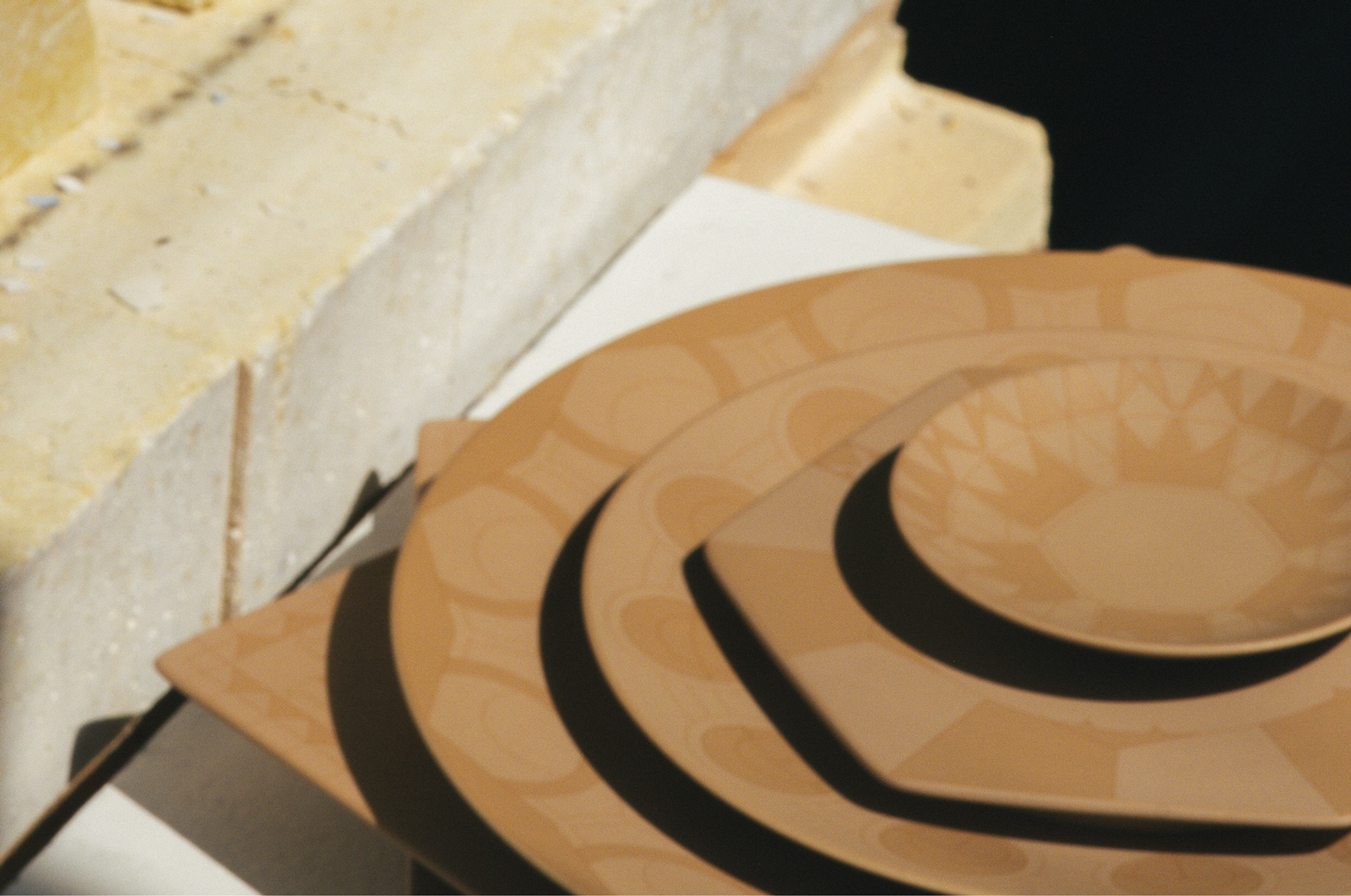
1923


The Imperial Peacock Collection, is a homage to Frank Lloyd Wright’s unique patterns deconstructed from his iconic Peacock artwork, hand carved in Oya stone for the Imperial Hotel. The peafowl, with its vibrant plumage, has long been depicted in Japanese aesthetics as a symbol of the elegance of nature. The peacock’s elegance was woven into many details, from rugs and furniture to intricate tapestries. Frank Lloyd Wright once described the peacock as “a spiritual element” introduced to Earth for the sheer “love of beauty.” Its grace and resilience captivated him—a beauty that, even when domesticated, endures. This spirit of beauty became a guiding inspiration for Wright’s 1915 design of the Imperial Hotel in Tokyo.






Frank Lloyd Wright Bio
The work of Frank Lloyd Wright (1867-1959) is recognized worldwide as pivotal to the development of modern architecture. Through a deep understanding of our relationship with the natural world, Wright’s ideas and designs were inspired by organic forms.
He found much to admire in Japan, the country he once described as “the most romantic, artistic, nature inspired country on earth.” Wright interacted with Japan on several levels, from physical reality to spiritual communion. He made his first trip to Japan in 1905, travelled there again in 1913, and between 1917 and 1922, he spent almost three full years there as the architect of the Imperial Hotel in Tokyo (demolished 1968) and in that time created many decorative elements for the interior of the Hotel to create a unified design. The tableware used in the Wright-design Imperial Hotel at the time was designed by Frank Lloyd Wright and manufactured by Nippon Toki Gomei Kaisha, the predecessor of Noritake.
His vision, “to make life more beautiful, the world a better one for living in, and to give rhyme, reason, and meaning to life” is carried on through the Frank Lloyd Wright Foundation and represented on the World Heritage List.
Frank Lloyd Wright Foundation
The Frank Lloyd Wright Foundation is dedicated to preserving and perpetuating Wright’s vision, ensuring that his philosophy of organic architecture—design in harmony with nature and community—remains a vital force in contemporary life.
One way the Foundation brings Wright’s legacy to life is through collaborative partnerships, which serve as a tool to make great design accessible to broader audiences. Focusing on new products inspired by his principles, these collaborations translate his belief in the unity of material, form, and nature into everyday life. Our partnerships help to demonstrate that Wright’s design ethos is not just a part of history but a living philosophy that continues to influence how we build and live—now and for future generations.